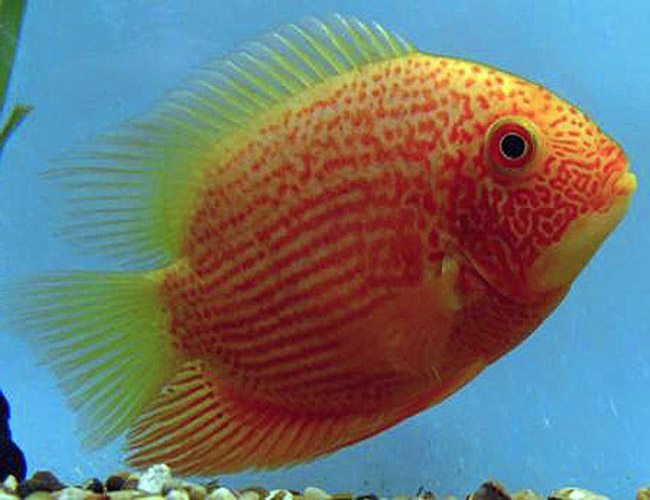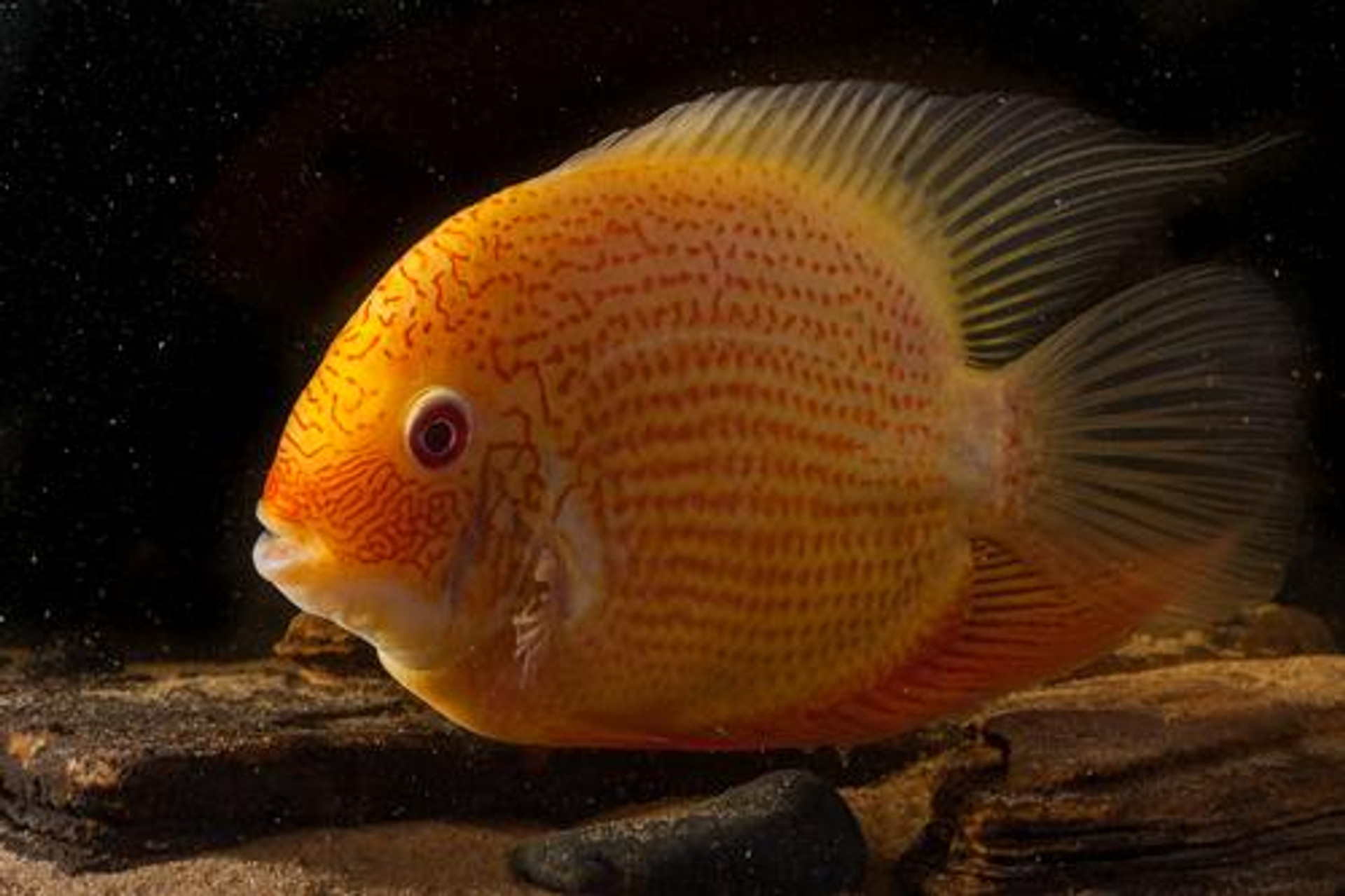
They are omnivores that will accept most any food like a high quality flake food or our Small Pellet Fish Food. In the wild these fish are found living alongside Corys and other small Catfish, Tetras, and Cichlids such as the Uaru and Severum. They do best in a temperature range of 72 - 84 degrees and pH range of 6.0 - 7.5. Nicknames: Ram Cichlid, Ramirez’s Cichlid, Butterfly Cichlid Color Forms: German Blue, Electric Blue, Gold Size: 2-3 inches. We recommend placing these fish in a minimum of a 75 gallon tank if you are placing them in a community tank.

They will appreciate a well planted aquarium. Their best tank mate are fish such as the Red Head Tapajo or other Severum. They will do best in a cichlid community tank. They are a peaceful fish that will do well in a community tank setting. The Red Shoulder Severum is native to the Amazon Basin in South America. To have the most coloration you want to order a dominant male. Like all cichlids, Males will have the most color, while most females with will lack the color of the males. The Gold Severum Cichlid or Banded Cichlid is a trusting fish, and will accept food directly.
RED ZEBRA CICHLID VS GOLD SEVERUM FULL
These fish max out at about 8". You should only buy these if you have similar sized tank mates or a grow out tank for these. Gold Severum Cichlid or Banded Cichlid, is a variation of (Heros Severus) severum, that have an iridescent sheen to their scales and off-white to gold background color, and can range from 0.75 inches to 10 inches at full maturity. And while as sub-adult fish they can look identical, once they are full grown, they can have subtle variations.Up for sale are Unsexed Red Shoulder Severum. We currently have purchase options for 1" unsexed fish. This section is for the South American Cichlids and New world cichlids that are not found. There could be two hundred miles between actual collection points for fish labled as Apistogramma cf. Many serious hobbyists are reluctant to even mix fish from different import batches, even if they have the same river location as the collection point. It's quite easy for these crosses to make thier way into the aquarium trade and dilute genuine gene pools. Now while crossing two locational variants isn't hybridising a fish, it does raise some ethical issues. altifrons "Aripuana I" which means it's a geophagus that looks very similar to Altifrons from the river Aripuana and I signifies that it is the first of two similar looking variants found in the river system. However, you will also find some fish labled as follows, Geophagus cf.

altifrons (Rio Xingu) or G.altifrons (Rio Tapajos), or Apistogramma agassizii "Flamenco" (Rio Tigre) or A. At the moment it looks to me that they are all male. I don't want to end up with 5 of the same sex. CICHLIDS - SOUTH AMERICA Blue German Ramirezi m/l Red Spotted Gold Severum 2 inch Black German Ramirezi m/l Bolivian Ram med Blue German Ramirezi lg. The last two pictures are of 3 red severums I'm looking to buy.

The genus Heros is distinguished by its unique shape and size and in particular. The first 4 pictures are of my 2 severums. Overall the most recognizable color seen is the wild-green type as well as gold. Now some of these locational variants are recognised as the same species and you will the fish will have the location in it's name, e.g. I'd like some help in sexing some severums cichlids. Obviously as always it can depend on the fish, but I dont think theres enough space to set up territories. Quite often colour morphs occur in different locations, and are called locational variants.Ī couple of classic examples of species that have many locational variants are Geophagus altifrons or Apistogramma agassizii. answer 2 Josiepaolillo 7 years ago I think 55g is a bit on the small side for this mix- and also imo a bit small for a fully grown green/gold severum. This is how some of the line bred variants of some fish are created. However if a single species has a few different colour morphs with in it, and you cross two of them, this is not a hybrid. So if an Angel has a parent of each, it is then a hybrid, even though it still looks exactly like an angel. Everyone knows there are two main species of Angels within the genus Pterophyllum, P. Now the parents can be from the same genus or from diferent genuses. A hybrid, in fish terms, is a fish whose parents are two different species.

There seems to be a lot of misinformation about what a hybrid is. If it is, then my advice is to never buy one. Are the super red severums a hybrid? That is the question.


 0 kommentar(er)
0 kommentar(er)
